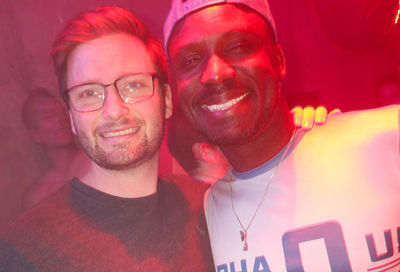Raising the Dead
Louis Bayard's fictional Poe may sound like a literary gimmick, but it's nothing short of the real deal
The Pale Blue Eye
Your first reaction upon hearing that Louis Bayard, author of the very successful Mr. Timothy (where he raised the literary spirit of Charles Dickens’s Tiny Tim), has written a new novel where he raises the very real spirit of writer Edgar Allan Poe might be more than a little cynical. It’s a hook, right? A gimmick. What’s next? Internet fan fiction on the New York Times‘ bestseller list?
But Bayard is a writer who defies expectations. After all, he went from the fun and highly entertaining novels Fool’s Errand and Endangered Species — both of which were set in modern-day Washington, D.C. — to the significantly darker streets and alleyways of Mr. Timothy‘s Victorian England. In Bayard’s imagining, the adult Tiny Tim lived in a brothel, spending his spare time teaching prostitutes to read and picking the pockets of drowned bodies. God bless us, indeed.
In The Pale Blue Eye, Bayard casts his fictitious Edgar Allan Poe as an eccentric and largely outcast West Point cadet. Bayard’s Poe is a liar, an outrageous storyteller who is far more comfortable communing with spirits than speaking with his fellow human beings.
Advertisement
|
We meet Poe through the narrative of Gus Landor, a retired New York City detective who has taken refuge in a small cabin in the woods of the Hudson Valley. After a cadet is murdered and savagely mutilated on the West Point campus, Landor is pressed into service by two of the academy’s lead officers. They need the murder to be solved, not simply so that justice can be served, but to preserve the reputation and very existence of the fledgling military academy. Through a series of events, Landor, in spite of recommendations to the contrary, enlists the aid of Cadet Fourth Class Edgar Allan Poe to aid in his investigation.
At this point, any attempt to further describe the novel’s plot risks giving away too much of this tightly knit thriller. Bayard has layered freshly committed crimes over old family secrets, youthful courtships over secret affairs, logic over superstition.
And perhaps most importantly, with The Pale Blue Eye Bayard takes the opportunity to remind us that he is an author of admirable ability. He is skillful enough to craft an intricate and incredibly satisfying mystery and confident enough to take the kind of risks some authors abandon after gaining a bit of success.
The Pale Blue Eye is not simply a novel set in the 19th century; it assumes the identity of a 19th century novel. Individual chapters are marked as ”Letter to Edgar A. Poe, Cadet Fourth Classman,” or ”Report of Edgar A. Poe to Augustus Landor.” We are offered such lines as, ”To you, my Reader, I dedicate this narrative” — the kind of sentence that calls to mind the books you were once forced to read in high school English class.
And Bayard does not simply insert Edgar Allan Poe into the middle of his book as a gimmick. He borrows elements and symbols of Poe’s work, including the pale blue eye of the title which appears to be drawn directly from the author’s Tell Tale Heart. The fictional Poe’s letters and eccentric stories and affected monologues hold onto the very texture of the real man’s work. The Pale Blue Eye is successful and believable because Bayard’s Poe, a character who is as much a fiction as the wholly imagined Augustus Landor, is so ultimately believable and altogether fascinating.
It is hard to know where Louis Bayard’s imagination will run to next. He has taken his readers from the Potomac to the Thames to the banks of the Hudson River. He has revived one iconic literary figure and then gone on to raise the dead. We can only hope that the skill and talent we see in The Pale Blue Eye continues so we can keep enjoying the tour.
Support Metro Weekly’s Journalism
These are challenging times for news organizations. And yet it’s crucial we stay active and provide vital resources and information to both our local readers and the world. So won’t you please take a moment and consider supporting Metro Weekly with a membership? For as little as $5 a month, you can help ensure Metro Weekly magazine and MetroWeekly.com remain free, viable resources as we provide the best, most diverse, culturally-resonant LGBTQ coverage in both the D.C. region and around the world. Memberships come with exclusive perks and discounts, your own personal digital delivery of each week’s magazine (and an archive), access to our Member's Lounge when it launches this fall, and exclusive members-only items like Metro Weekly Membership Mugs and Tote Bags! Check out all our membership levels here and please join us today!























